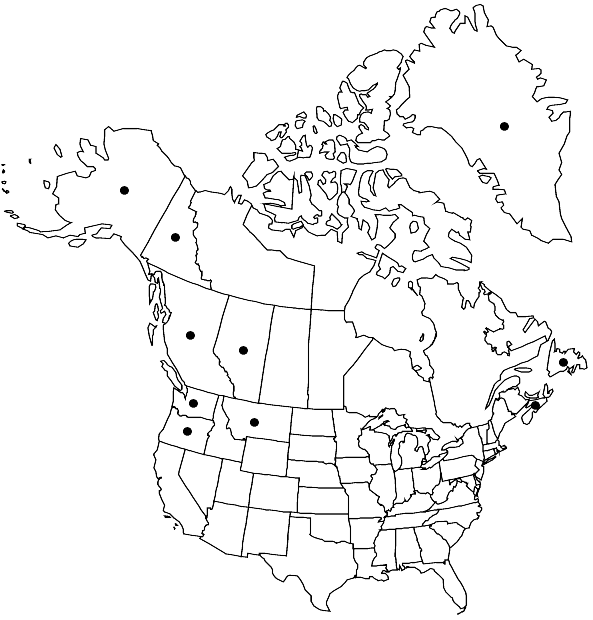Difference between revisions of "Oligotrichum hercynicum"
Fl. Franç. ed. 3, 2: 492. 1805,.
FNA>Volume Importer |
FNA>Volume Importer |
Revision as of 21:51, 16 December 2019
Plants bright green, somewhat glaucous, becoming reddish brown with age. Stems 1–2.5(–3) cm. Leaves 2.5–5 mm, lanceolate from a weakly sheathing base, broadly incurved and subtubulose when dry, somewhat spreading but remaining incurved and strongly channeled distally when moist; margins entire to finely and distantly serrulate; costa percurrent or shortly excurrent as a short mucro, the adaxial surface with several low continuous or interrupted abaxial lamellae; abaxial surface of lamina smooth or sporadically with scattered short lamellae near the apex of leaf; adaxial lamellae 8–20, 6–13 cells high, restricted to the costa, crispate-undulate, extending to the middle of the leaf or below, the margins finely and irregularly crenulate with bulging marginal cells, smooth; median cells of lamina 15–20 µm, somewhat smaller towards the margins, rounded subquadrate, thick-walled; marginal teeth distant, minute, unicellular; perichaetial leaves 3–3.5 mm, narrowly lanceolate. Seta stout, pale brown, 2–4 cm. Capsule 2–4 mm, cylindric, slightly larger at the base, terete or irregularly angled or ridged; peristome teeth 32, double, somewhat irregular. Spores 10–15 µm.
Habitat: Soil, gravel, and moist peaty embankments, open disturbed sites, roadcuts, beside paths, on lake shores, stream banks, late snow areas, also aquatic in rapidly flowing glacier melt streams
Elevation: moderate to high elevations (500-2200 m)
Distribution

Greenland, Alta., B.C., Nfld. and Labr. (Nfld.), N.S., Yukon, Alaska, Mont., Oreg., Wash., Europe (southward to Spain, Turkey), e Asia (Japan).
Discussion
An arctic-alpine species widespread in northern latitudes, Oligotrichum hercynicum is a pioneer species, typically forming bright green patches on disturbed soil but, like O. falcatum, also in aquatic habitats.
Selected References
None.